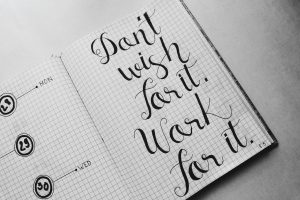Crafting a Professional Resume
Crafting a professional resume is a critical step in your job search journey. Your resume serves as a representation of your skills, experience, and qualifications to potential employers. By investing time and effort into creating a well-written resume tailored to your career goals, you can significantly enhance your chances of securing interviews and landing your desired job.
Importance of a Well-Written Resume
A well-crafted resume plays a pivotal role in showcasing your professional profile and making a positive first impression on recruiters. It serves as a marketing tool that highlights your strengths, achievements, and unique selling points. A compelling resume not only demonstrates your qualifications for a specific role but also sets you apart from other candidates vying for the same position.
To create an impactful resume, it’s essential to include relevant information that aligns with the job requirements and effectively communicates your value proposition. Utilize resume examples as a reference to understand different formats and styles that suit your industry and career level.
Tailoring Your Resume to Your Goals
One of the key components of a successful resume is tailoring it to align with your career objectives. Whether you are a seasoned professional, a recent college graduate, or someone transitioning to a new field, customizing your resume to reflect your goals is crucial.
Consider including a tailored professional summary at the beginning of your resume to provide a brief overview of your experience and expertise. Highlight relevant skills and achievements that are directly related to the position you are applying for.
By customizing your resume to cater to the specific requirements of each job application, you demonstrate your genuine interest in the role and showcase how your qualifications make you an ideal candidate. Employers value a targeted resume that directly addresses their needs and shows a genuine motivation to contribute to their organization’s success.
Investing time in crafting a well-written and tailored resume not only enhances your chances of getting noticed by recruiters but also sets the stage for a successful job application process. Remember to use resume writing services or professional resume templates for additional support and guidance in creating a standout resume that effectively communicates your professional brand.
Essential Sections of a Resume
When crafting a professional resume, it is essential to ensure that it includes all the necessary sections to effectively showcase your skills and experience to potential employers. The key sections to focus on include contact information, professional summary, work experience, education, skills, and additional sections.
Contact Information
Your contact information is the first thing employers see on your resume, so it’s crucial to include accurate and up-to-date details. This section typically includes your full name, phone number, email address, and optionally your mailing address. Make sure that the email address you provide is professional and appropriate for a job application.
Professional Summary
The professional summary, also known as a career summary or executive summary, is a brief overview of your skills, experiences, and career goals. This section serves as a snapshot of your qualifications and should grab the attention of the hiring manager. Highlight your key achievements, strengths, and career objectives in a concise and compelling manner.
Work Experience
The work experience section details your professional history, including your previous job titles, company names, dates of employment, and job responsibilities. It is important to showcase your relevant work experience in reverse chronological order, starting with your most recent position. Quantify your achievements and responsibilities to demonstrate your contributions to previous roles.
Education
The education section of your resume should list your academic background, including your degrees, certifications, and any relevant coursework. Include the name of the institution, degree earned, graduation year (or expected graduation year), and any academic honors or awards received. If you are a recent graduate or a student, your education section may hold more prominence on your resume.
Skills
Highlighting your skills is crucial in demonstrating your qualifications for the job. This section should include both hard skills (technical abilities specific to the job) and soft skills (transferable skills such as communication and leadership). Tailor your skillset to match the requirements of the job you are applying for to show that you are a good fit for the position.
Additional Sections
In addition to the core sections of a resume, you may choose to include additional sections that further bolster your qualifications. These sections can vary depending on your industry and the specific job you are applying for. Some examples of additional sections include professional memberships, volunteer experience, language proficiency, technical proficiencies, publications, and professional development.
Ensuring that your resume includes these essential sections in a clear and well-organized manner will enhance your chances of catching the eye of recruiters and hiring managers. Each section plays a vital role in presenting a comprehensive overview of your skills, experience, and qualifications, making it easier for employers to assess your fit for the job. For more guidance on resume building, consider using a professional resume builder to streamline the process and create a polished resume that effectively showcases your credentials.
Formatting Tips for Impact
Ensuring that your resume is visually appealing and easy to read is crucial in making a strong first impression. The formatting of your resume can significantly impact how recruiters perceive your qualifications and suitability for a position. Here are essential tips for creating a professional and impactful resume layout, font choice, and use of bullet points.
Font, Font Size, and Layout
Your choice of font, font size, and overall layout can greatly affect the readability of your resume. Opt for a clean and professional font such as Arial, Calibri, or Times New Roman, and maintain a consistent font size throughout the document. It is recommended to use a font size between 10 and 12 points for the main content and slightly larger font for section headings to create visual hierarchy.
Additionally, pay attention to the overall layout of your resume. Ensure that there is adequate white space to prevent the document from appearing cluttered. Use headings, bold text, and bullet points to organize information effectively and guide the reader’s attention to key details.
Use of Bullet Points
Utilizing bullet points is an effective way to present information in a concise and structured manner. When listing your work experience, skills, or achievements, use bullet points to highlight key points and make your resume easier to skim. Start each bullet point with a strong action verb to demonstrate your accomplishments and contributions in previous roles.
Consider the following example:
Work Experience
| Date | Job Title | Company |
|---|---|---|
| Jan 2018 – | Marketing | ABC Corporation |
| Present | Specialist | |
| – Developed | marketing | |
| and executed | strategies to | |
| social media | increase brand | |
| campaigns | awareness | |
| – Conducted | market research | |
| and analysis | for new product | |
| initiatives | launches |
Consistency and Clarity
Consistency in formatting is key to creating a professional-looking resume. Ensure that headings, subheadings, bullet points, and text alignment are consistent throughout the document. Use a consistent format for dates, job titles, and company names to maintain clarity and readability.
Proofread your resume carefully to eliminate any spelling or grammatical errors that could detract from the professionalism of your document. Consider seeking feedback from trusted peers or utilizing resume writing services to ensure that your resume is polished and error-free.
By following these formatting tips, you can enhance the visual appeal and clarity of your resume, increasing the chances of capturing the attention of recruiters and showcasing your qualifications effectively. Remember to tailor your resume layout to the specific job you are applying for and consider utilizing a professional resume template to streamline the formatting process.
Showcasing Achievements and Skills
In the competitive job market, effectively showcasing your achievements and skills on your resume is essential to stand out to potential employers. By quantifying your accomplishments, highlighting pertinent skills, and incorporating industry-specific keywords, you can create a compelling resume that captures the attention of hiring managers.
Quantifying Achievements
Quantifying your achievements provides concrete evidence of your contributions and demonstrates the impact you’ve made in previous roles. Use numbers, percentages, or other numerical data to quantify accomplishments whenever possible. This not only adds credibility to your resume but also helps hiring managers visualize the value you can bring to their organization.
| Example | Achievement |
|---|---|
| Increased sales revenue by 30% within the first quarter. | |
| Managed a team that achieved a customer satisfaction rating of 95%. | |
| Reduced project delivery time by 20% through streamlining processes. |
Highlighting Relevant Skills
When outlining your skills on your resume, focus on those that are directly relevant to the position you are applying for. Tailoring your skills to match the job requirements shows that you have the capabilities necessary to excel in the role. Avoid listing generic skills and instead emphasize specific competencies that align with the job description.
| Skills | Relevance to Job |
|---|---|
| Project Management | Directly relevant to leading cross-functional teams. |
| Data Analysis | Matches the requirement for statistical reporting. |
| Communication Skills | Essential for client interactions and team collaboration. |
Incorporating Keywords
Incorporating industry-specific keywords throughout your resume is vital for passing through applicant tracking systems (ATS) and catching the attention of hiring managers. Analyze the job description and company website to identify keywords related to the desired qualifications, skills, and experience. Integrate these keywords strategically in your resume to ensure it resonates with the employer’s requirements.
| Job Description Keyword | Resume Integration |
|---|---|
| Project Management | “Proficient in project management, overseeing timelines and deliverables.” |
| Data Analysis | “Demonstrated expertise in data analysis, providing actionable insights for decision-making.” |
| Customer Relationship Management | “Skilled in customer relationship management, ensuring high client satisfaction levels.” |
By quantifying your achievements, highlighting relevant skills, and incorporating industry-specific keywords, you are better equipped to create a professional resume that effectively communicates your qualifications and suitability for the desired role. Remember to tailor each section of your resume to align with the job you are applying for, showcasing your value as a candidate in a clear and impactful manner.
Professional Language and Tone
In the realm of professional resume writing, the language and tone you use are paramount in creating a lasting impression. Employing active voice, maintaining professional language, and ensuring impeccable grammar are essential elements to consider when crafting your resume.
Writing in Active Voice
Opting for active voice in your resume can significantly enhance its impact. Active voice conveys a sense of confidence and assertiveness, making your accomplishments stand out. By structuring your sentences to highlight the subject performing the action, you showcase ownership of your achievements and create a more engaging narrative.
Using Professional Language
Deploying professional language throughout your resume is key to establishing credibility and professionalism. Utilize industry-specific terms, buzzwords, and jargon that resonate with the roles you are targeting. Strive for precision and clarity in your language, avoiding unnecessary fluff or ambiguity. This approach demonstrates your expertise and aligns you with the expectations of recruiters and hiring managers.
Eliminating Errors and Typos
Eliminating errors and typos is a fundamental step in ensuring the effectiveness of your resume. Even minor mistakes can detract from your credibility and attention to detail. Thoroughly proofread your document and consider seeking a second set of eyes to catch any overlooked errors. Utilize tools like spell checkers and grammar validators to enhance the accuracy of your content and present a polished final product.
Maintaining a professional language and tone throughout your resume, combined with active voice and meticulous attention to detail, conveys a sense of professionalism and competence to prospective employers. Remember, your resume is a reflection of your qualifications and capabilities, so investing time and effort into perfecting these aspects can significantly elevate your chances of landing your desired role.
Customizing for Different Audiences
When it comes to creating a professional resume, tailoring it to cater to different audiences is crucial for maximizing its impact. Whether you’re an entry-level job seeker, a career changer, or an executive-level professional, there are specific strategies you can employ to showcase your qualifications effectively.
Tips for Entry-Level Job Seekers
Entry-level job seekers often lack extensive work experience, but there are ways to compensate for this on a resume. Focus on highlighting your education, relevant coursework, internships, volunteer work, and extracurricular activities that demonstrate transferrable skills. Emphasize your willingness to learn and grow within the role, and showcase any certifications or training programs you have completed. Utilize a clean and clear resume format to make your key information easily accessible to recruiters. For more guidance on building a strong entry-level resume, consider using a resume builder.
Strategies for Career Changers
Career changers face the challenge of transitioning into a new industry or role, but their diverse background can be a unique selling point. When crafting a resume as a career changer, focus on transferable skills and accomplishments that are relevant to the desired position. Use a professional summary to explain the reasons for your career change and how your past experiences align with the new role. Tailor your resume to emphasize skills that are valued in the new field, and consider adding a section on relevant coursework or certifications you have obtained to showcase your commitment to learning. If you need inspiration, explore resume examples tailored for career changers.
Techniques for Executive-Level Resumes
Executive-level resumes require a strategic approach to highlight leadership skills, achievements, and industry expertise. As an executive, your resume should convey a strong professional brand and showcase your ability to drive business results. Use a format that allows for detailed explanations of your career progression, including specific achievements and quantifiable results. Incorporate a mix of hard and soft skills, such as strategic planning, team building, and stakeholder management, to demonstrate your leadership capabilities. Ensure that your resume reflects a polished and executive-level tone to align with your career aspirations. If you’re looking for assistance in crafting an executive resume, consider utilizing resume writing services that specialize in executive-level resumes.
By customizing your resume to suit the needs and expectations of different audiences, you can effectively convey your qualifications and make a lasting impression on potential employers. Whether you’re just starting your career, transitioning to a new field, or aiming for executive positions, tailoring your resume is key to demonstrating your value and expertise in a competitive job market.




